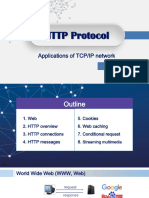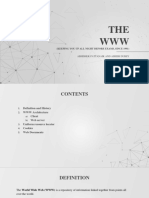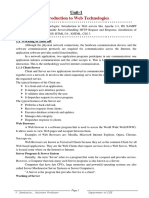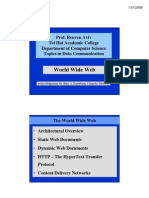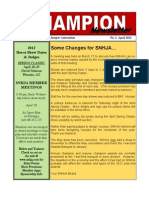0% found this document useful (0 votes)
9 views34 pagesData Networking
The document provides an overview of standard client-server protocols, focusing on the World Wide Web (WWW) and HyperText Transfer Protocol (HTTP). It covers key concepts such as Uniform Resource Locators (URLs), types of web documents, the role of cookies, and web caching through proxy servers. Additionally, it discusses the differences between nonpersistent and persistent connections in HTTP communication.
Uploaded by
HussainCopyright
© © All Rights Reserved
We take content rights seriously. If you suspect this is your content, claim it here.
Available Formats
Download as PPTX, PDF, TXT or read online on Scribd
0% found this document useful (0 votes)
9 views34 pagesData Networking
The document provides an overview of standard client-server protocols, focusing on the World Wide Web (WWW) and HyperText Transfer Protocol (HTTP). It covers key concepts such as Uniform Resource Locators (URLs), types of web documents, the role of cookies, and web caching through proxy servers. Additionally, it discusses the differences between nonpersistent and persistent connections in HTTP communication.
Uploaded by
HussainCopyright
© © All Rights Reserved
We take content rights seriously. If you suspect this is your content, claim it here.
Available Formats
Download as PPTX, PDF, TXT or read online on Scribd
/ 34


